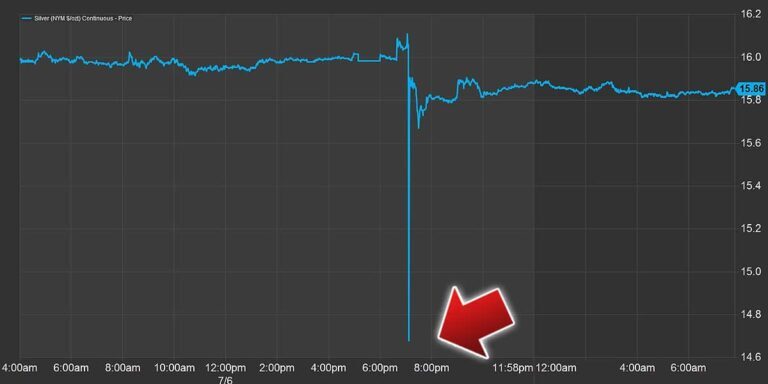
Low Liquidity Makes Flash Crashes the New Normal for Junk Bonds
Have you ever experienced a “flash crash”? If not, you might be wondering what a flash crash looks like. A perfect example of this is what happened with Party City in the waning months of 2019.
On November 7, 2019, Party City announced its 3rd quarter earnings. On a conference call CEO James M. Harrison told investors, “Our third quarter and October results were disappointing as many of the tailwinds that we expected failed to materialize. The negative impact of helium shortages was felt across the business on both the top and bottom line including a 210 basis point headwind to third-quarter brand comparable sales.”
All in all, total revenues decreased 2.3% on a reported basis to $540.2 million, total retail sales decreased 1.7% on a reported basis, brand comparable sales decreased 2.6% during the third quarter due to approximately 210 basis points, and total gross profit margin decreased 590 basis points to 30.6% of net sales. This all added up to a reported GAAP net loss of $281.7 million or $3.02 per share.
Not the news that investors wanted to hear. It sent them scurrying for the exits. A majority of Party City’s junk-rated debt holders rushed to get rid of their debt assets. But there was a problem: the announcement, coupled with an unfavorable market climate, made it hard to find buyers. Nobody wanted to buy Party City’s junk bonds! This price of their bonds plunged 50% before making a slight turn back toward recovery and getting some of that loss back.
According to the Wall Street Journal, the investors who decided not to sell during this flash crash took losses that amounted to around $500 Million on paper. Since Party City issued the debt, this was by far the largest swing they have experienced.
These wild swings have become all too common in the riskier areas of the corporate bond market. During the back half of 2019, the $2.4 Trillion market for corporate bonds and loans rated which are below investment-grade was a much wilder ride than almost all other markets that experienced a relatively calm ride.
In December of 2019, bonds with the lowest junk credit rating did have a comeback and Triple-C bonds actually returned 4.7% following months of losses. This rebound proved many traders’ forecasts on the then-current state of market volatility. Low liquidity in this high-yield debt market has created an environment in which flash crashes like this are expected to become the norm.
Many traders and fund managers have seen this trend as a wakeup call about how much risk they are adding to portfolios and how tactical they are being in their trading. It has also led to much more attention being paid to liquidity.
All this has led to a situation where, the more frequent this volatility becomes, the less enthusiastic high-yield investors are to buy when prices start to rapidly drop. This is especially evident when looking at hedge funds who have traditionally happily picked up distressed debt. They are no longer as apt to do so after getting burned on this in the last few years.
If this teaches us anything indirectly, it’s that major investment risks come not so much from the instrument as it does from the investor. High-yield junk bonds offer the potential for greater debt income. Of course, there’s tremendous risk on the other side of that. But such investments don’t always discourage hedge funds and institutional investors from buying them.
And why not? If an investor is smart, high-yield junk comprises only a small part of a portfolio--you know, the age-old adage of diversification. If you’re going to speculate in high-risk investments, you’d better balance them out with more stable assets, like gold and silver, cash reserves, stocks, and investment-grade bonds. A flash crash might not mean much if it’s only, say, 2 - 5% of your portfolio.










